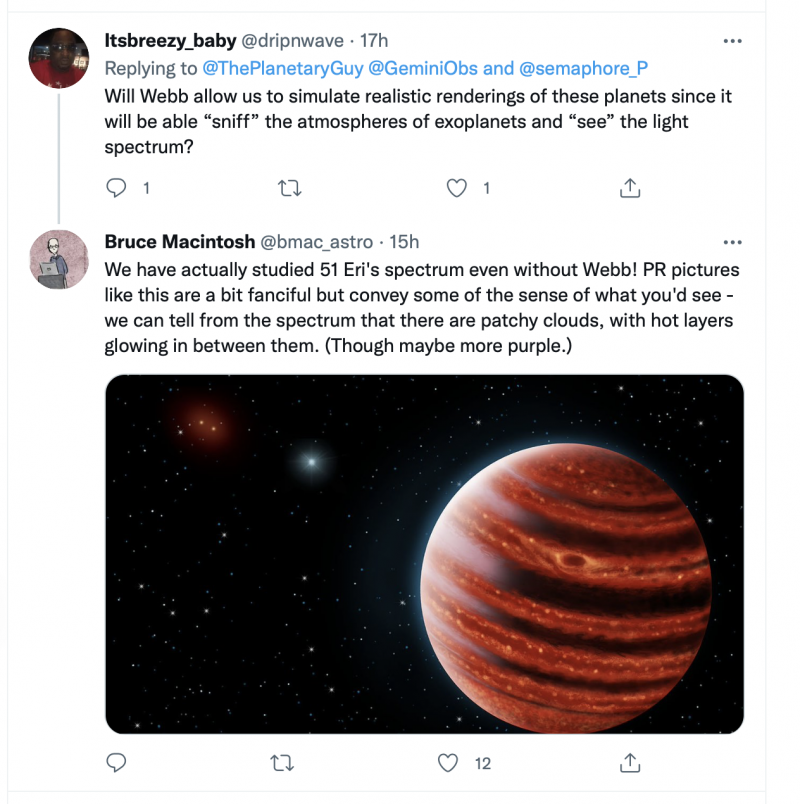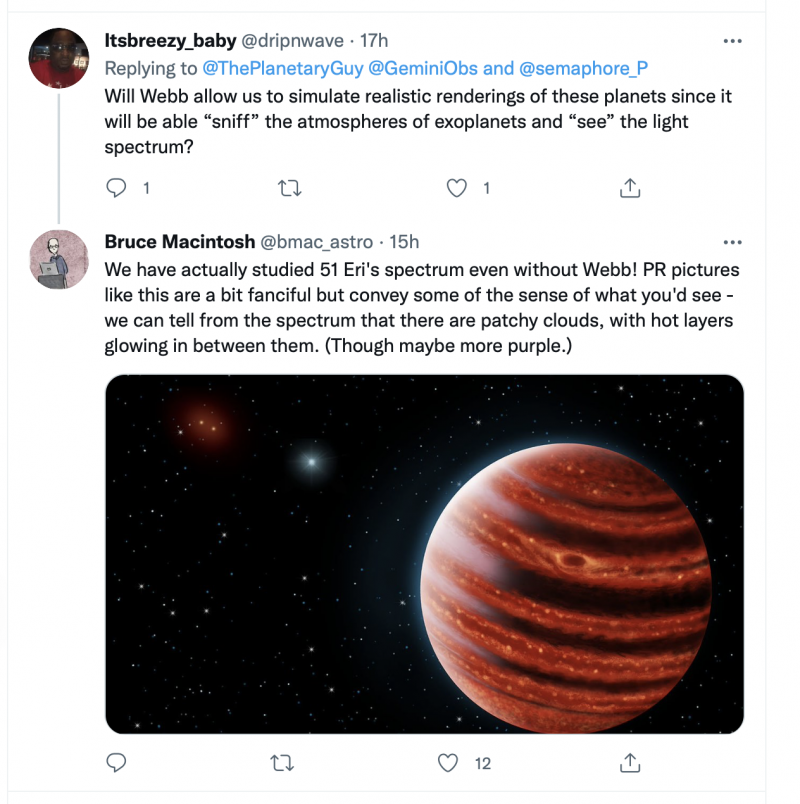51 Eridani b in motion
Orbiting a star 96 light years away.
In these five frames, taken by the @GeminiObs and processed by @semaphore_P, the gas giant 51 Eridani b completes part of its 20-AU orbit around its host star.
Credit: Jason Wang/Gemini Planet Imager Exoplanet Survey pic.twitter.com/rqJVLbJRyl
— Paul Byrne (@ThePlanetaryGuy) October 11, 2021

Planetary geologist Paul Byrne at Washington University in St. Louis (@ThePlanetaryGuy on Twitter) tweeted this cool animation this week (October 11, 2021). It shows a distant exoplanet called 51 Eridani b – orbiting the star 51 Eridani – located just 96 light-years away. The animation shows four years of movement of the planet, out of its 20-year orbit around its star. The star itself is covered over to reduce glare.
The Gemini Planet Imager, or GPI, in Chile captured the images. GPI was the first to spot 51 Eridani b, in 2015. When astronomers found this world, they noticed it had many of the characteristics of a young Jupiter. It’s roughly twice the mass of Jupiter, for example. But it’s much younger, only 20 million years old. By contrast, our sun and Earth are all about 4.5 billion years old. 51 Eridani b orbits a little farther from its star than Saturn does from our sun.
The Gemini Planet Imager was designed to find and analyze faint, young planets like this one, orbiting bright, nearby stars like 51 Eridani, which shines at about 5th magnitude, bright enough to be viewed with the eye from a dark location. Astronomers installed this instrument on the 8-meter Gemini South Telescope in Chile in 2013. The project is led by Bruce Macintosh, a professor of physics at Stanford University in California. At its discovery, GPI’s spectrometer showed the presence of methane and water in the atmosphere of 51 Eridani b. So this exoplanet isn’t unlike the planets in our solar system. At the time of the planet’s discovery, Macintosh said:
This planet really could have formed the same way Jupiter did. The whole solar system could be a lot like ours.
Astronomers believe planets like Jupiter form by building up a large core over a few million years and then pulling in a huge amount of hydrogen and other gases to form an atmosphere. And studying what’s in exoplanet atmospheres is going to be a major subject in astronomy in the years ahead. Macintosh had this interesting exchange with another commenter on Byrne’s tweet this week (screenshot below! not clickable):

Bottom line: An international team of astronomers has discovered an exoplanet 96 light-years away that shares many of the characteristics of a young Jupiter. In 2021, astronomers used the Gemini Planet Imager to show 51 Eridani b in motion around its star.
Enjoying EarthSky? Sign up for our free daily newsletter today!
